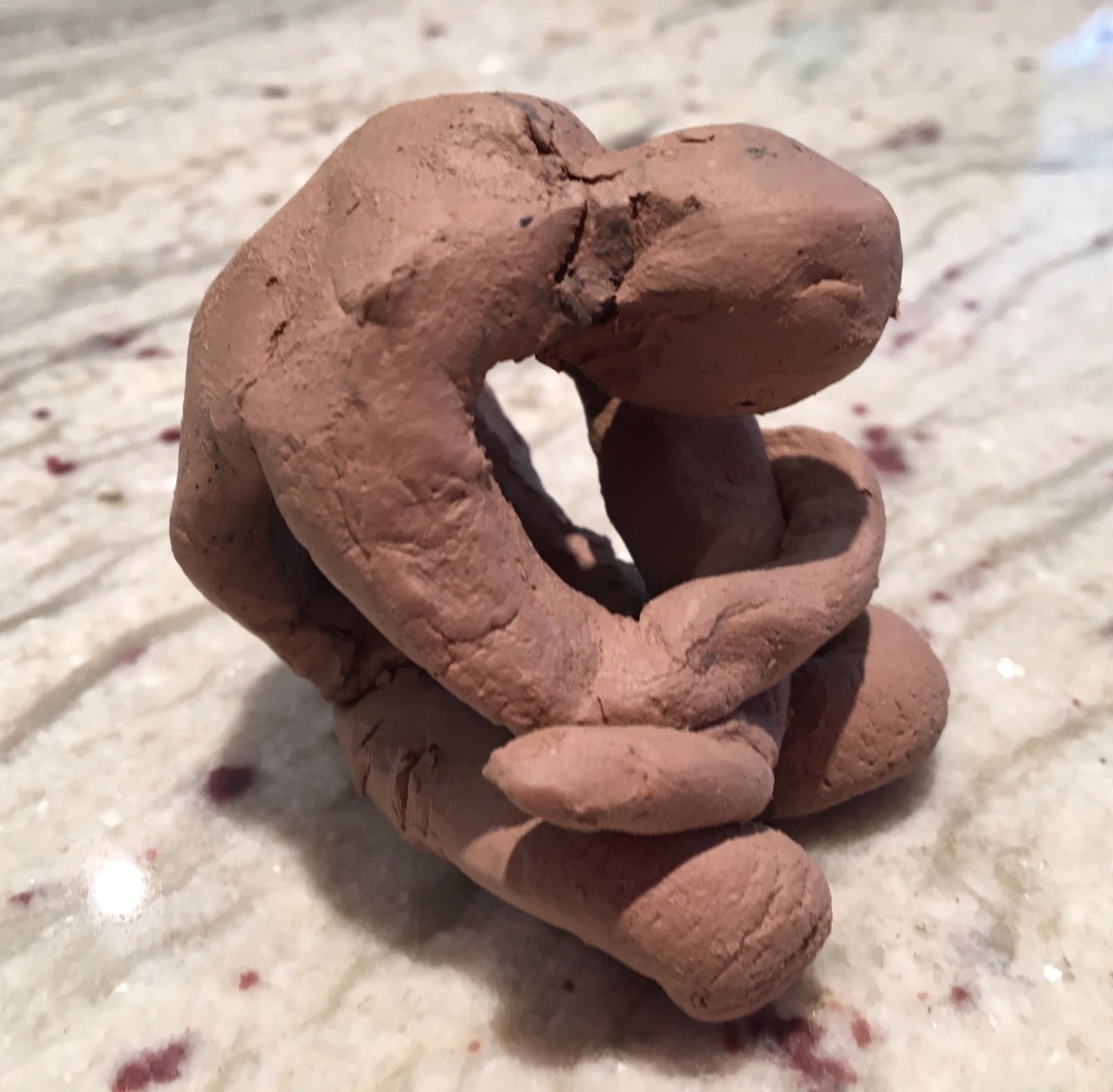Jules Findley
CONVERSATION OVERSEAS
Jules Findley from England is in conversation with Linda Duvall from Canada. During the DAR Residence, we will be dicussing maternal loss within the Child Migration Programme. This was a forced programme of over 130,000 children who were sent with the approval of the government to the then new countries, Canada, Australia, New Zealand and Southern Rhodesia, now Zimbabwe, from 1853 - 1967 children travelled alone in groups and were shipped overseas.
Hi Jules -
I am just finishing the book Marjorie Too Afraid to Cry. It is such a moving story. Part of me is amazed at how these children were taken away from their mother. But then again, we have a horrendous history of putting Indigenous children into Residential Schools here in Canada. The painting The Scream by Kent Monkman is seared into my brain.
http://www.kentmonkman.com/painting/2017/1/20/the-scream
Hi Linda, Kent Monkman is a great narrative artist!!! Looking through his portfolio he is truly a master at the native narrative history, thank you for introducing me to his work. I've been reading Michael Murpago's 'All Alone on the Wide Wide Sea', the story starts off with the children going on their long sea voyage. I think much is tamed down for children. I've just got the book, 'Marjorie, Too Afraid to Cry', and there is the film, 'Oranges and Sunshine'. Best Jules
THE BURNINGS

Morning Linda,
Hope you can get in now. Took me a while to realise you have to use the artist page, and the link is in the email and it works either types in or clicked in from the email. From 1853, when the government approved the Child Migration Programme, there wouldn't have been any instant fancy email for the children to keep in touch with their loved ones from England. As they set sail, they would have been told that their mothers had died, and the wider family ignored, and also their poor brothers and sisters were separated, some going to different countries, let alone different regions within a new country. Some of the mothers wrote touching cards of hope for their children, some mothers were not told they had left England, let alone which country they were sent to. Did you know that there are now 4 million Canadians descended directly from the Child Migration Programme? Hope you're well, J XXX
CONVERSATION OVERSEAS with Jules Findley and Linda Duvall
The children must have been given so much hope and songs sung like 'The Leaving of Liverpool' as many children took ships leaving Liverpool to travel to Canada. Some were away 5 weeks some 12 weeks before they arrived at their destinations. The chorus is:
So fare they well my own true love
When I return united we will be
It's not the leaving of Liverpool that grieves me
But my darling when I think of thee.
Liverpool would have been a grimy place, full of bustle from the docks. With the coal fires in the winter, there used to be terrible thick yellow fogs there, and as a child I remember the noisy sounds of the different fog horns being blown as the pilots for the big ships towed the ships up the Mersey channels into the docks. Along the dock road, there used to be pub on every corner of the street. In the old days the drinks were lined up along the bar for when the dockers used to finish their shifts. Many of those who sailed used to keep a ship in the top of window above their front doors of their homes. Any mothers who knew their children would be leaving would find Liverpool very busy, and the children would have found the city large and confusing. Hope is a big thing. In Liverpool there is a street called Hope.

Many mothers were unaware of their children leaving England to go to places like Canada and Australia, they did not know. I found a contemporary article about a mother's feelings as her daughter goes to Australia to work, and the loss a mother feels in trying to let her go.
http://www.dailymail.co.uk/femail/article-3265631/The-aching-loss-long-distance-Mummy-thousands-people-emigrate-year-women-left-struggling-let-go.html
Hi Jules -
Here is a Canadian version of this story, written by the daughter of a Home child. I just can't figure out how to turn it around to the right orientation. It started ok on my desktop.
Linda
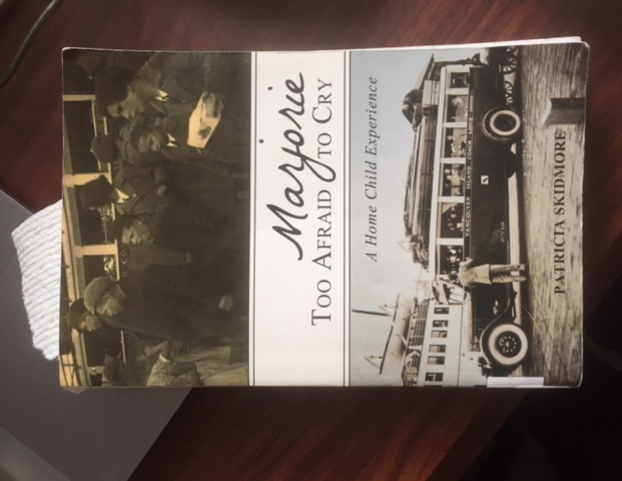
Hi Jules - We have just finished a long weekend here in Canada. It officially marks the end of summer, although the weather doesn't always correspond. We are heading into really hot weather in the next few days.
I've been thinking about the whole history of children being sent to the colonies - especially Canada and Australia, and the relationship between that history and Residential Schools that were also set up in Canada and Australia. Both reflect a definite disregard for children, and for their families. In the Marjorie book, there is such a lack of sympathy for the mother who has her children taken away.
Linda - Tuesday September 5th
Hi Jules -
I have been thinking about the relationship between the fact of knowing that such atrocities happened to children, and to their mothers, and feeling the loss of the intact family. Both of us have done research, but there is a neutrality to words on the page. For this digital residency, I would like to consider material translations of this sense of loss. Lots of my earlier work already considers this, but I would like to start from scratch, making something that can be translated into a digital form but that starts in the material world. Thoughts?
Linda
Hi Linda,
I've been reading 'Marjorie' too, in this autoethnographic writing, Marjorie's daughter writes about the excruciating pain mothers and children felt, as they were wrenched away from each other by agents working for the migration programme. No explanation, no compassion, no thought of future loss and generational loss. There was no forwarding address for the mother to write to her children; the loss of attachment the children felt and the guilt and pain the mother felt is well written. The children were taken away as a solution for child poverty, instead of supporting the mother, the British government made the mother feel denegrated and vulnerable, lost in the shame of poverty which was a shame and stigma to be seen on the streets in the 1930's in Society.
I have been thinking of imprinting, and through loss the loss of imprinting, stains and prints that we make on daily objects and as foot prints on the floor, the sand on the bech, we do it without thought. When our children are lost there is no more imprinting....loss of relationship, loss of home, but not loss of love....what comes is evident is the constant thinking from the children of their mother, their home, and the mother's thinking of her lost children... of love
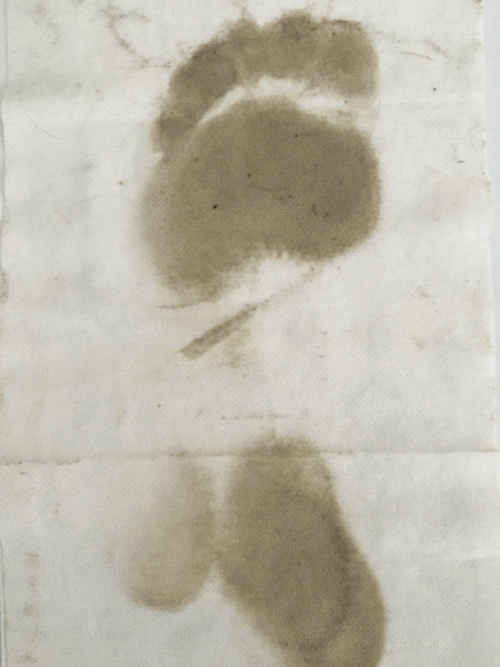
The other terrible painful outcome about loss is time....constantly and literally looking at time.... counting the minutes, the days, the months, the years.....

What do you think Linda? Leaving of Liverpool....When children are taken away no one thinks about the implication, you cannot touch their faces, give them a cuddle, kiss them, tell them you love them....talking, just talking....imprinting memories and physical imprinting. Mother's were so poorly treated, bullied and unsupported.
To go with the footprints I have added some imprinting of the walking I did when I was on one of my walks in Saskatoon through the long grass and down to the river.
I'm now going to leave this country and the next post you will have from me will be from Singapore, that's where the boats to Australia must have docked for supplies. The children were such a long time at sea, and what was in front of some of the children when they arrived was awful.
Have a safe trip to Singapore Jules!
I head to Toronto very early Wednesday morning. So we have had to harvest everything from the garden on the farm. And empty the fridge, etc.
Last trip to the farm for several months. But I have left a trail camera in the hole to keep me updated on 4-legged visitors.
I have spent quite a bit of time cleaning up, and have found many papers and objects from when J. was still alive. I am thinking about the role of these fragments from his life. I guess that they are traces. But I wonder what they communicate about his actual life. Just thinking!
Linda
Hi Linda,
Good Luck with travelling to Toronto. The children must have found Canada very cold in wintertime. I have thought about mothers' grief and responded to the despair and upset they must have felt. There would have been no emotional support for either the mothers or children in their losses. The mothers were supposed to be grateful for the opportunity given to their small children, who left their homeland, and children were supposed to have been grateful for a new life, without their families. What was the price they paid for losing their mothers? Mothers would have never forgotten them, never...
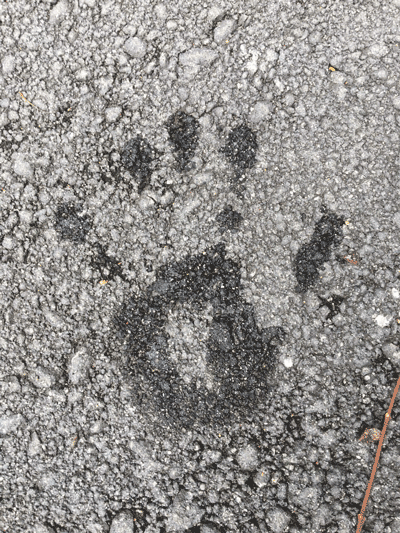
Here is the mother's hands the children would have missed their touch, and the mothers their children touching them


The pain and despair the mothers must have felt having lost their child. All that guilt and shame...
I have been making these small figures from Singapore, and dipping my hands in the rain water for imprinting
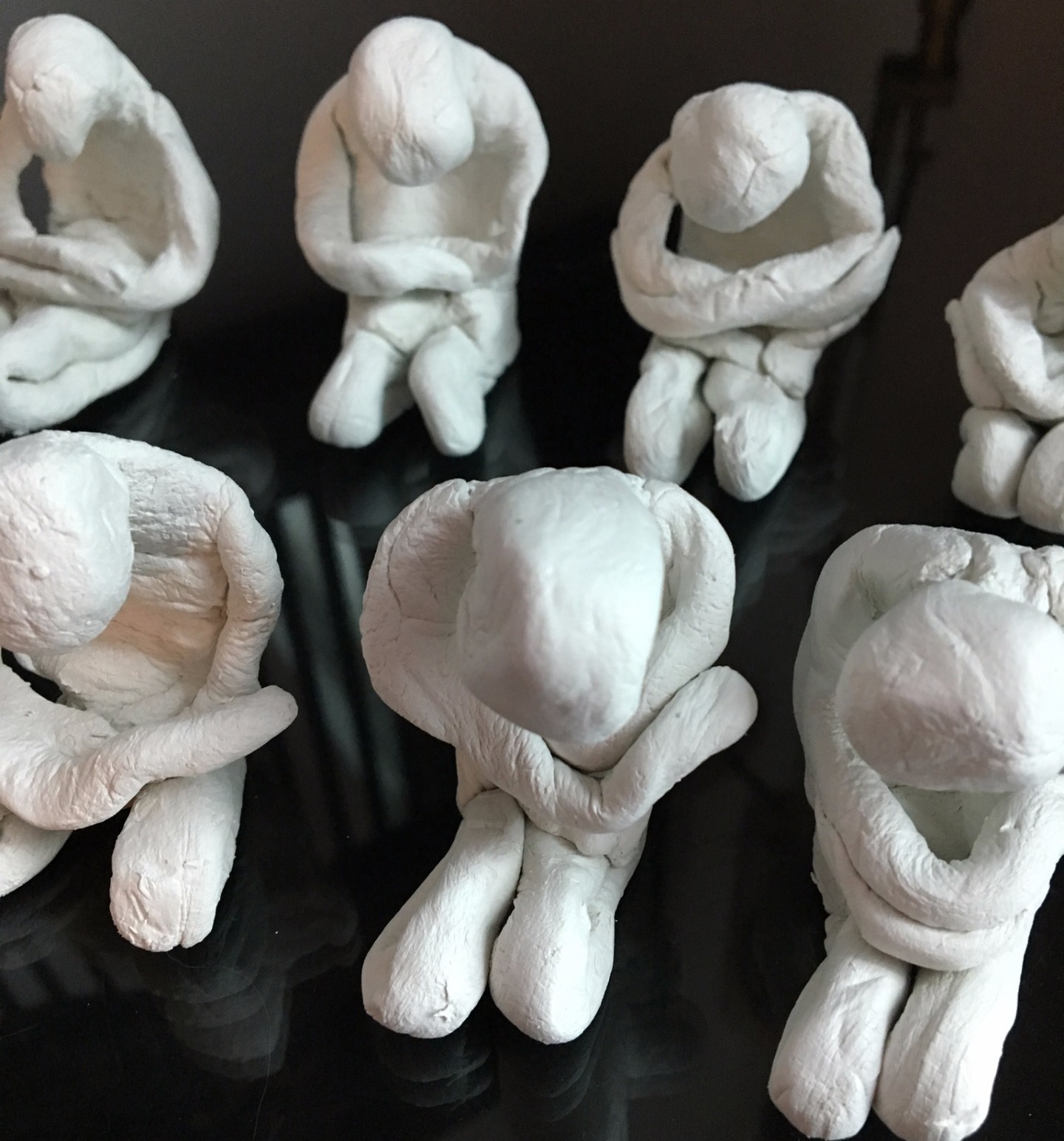

Fragments were all the children became and their mothers as well, no photographs or very few, and the children were not allowed to keep any memory of their mothers when they were separated. Here is the old Clipper Pier in Singapore where the old liners would have docked. The docks have changed significantly as there are new buildings all around and reclaimed land with gardens and a hotel further out accessible by bridges. Liners would have stopped here for supplies before heading on to Australia or New Zealand.
Hi Linda, I am back from Singapore. Such an interesting island, so many different nationalities have passed through and live there. The children were taken so far away from their homes they had to start again. The mothers left behind never forgot their children and had to endure their lives with the change that they no longer had their children to relieve the reality of poverty. I guess now you have packed up Saskatoon for the winter and are now in Toronto. I hope you had a safe journey. I got two figures home safely without coming apart. I'll give them another go.
Hope to hear from you soon, Jules XX
Hi Jules - that was a quick trip to Singapore.
What material are the little figures? They are very moving.
I have been thinking about the issue of how to represent absence. I have been working on some little books that contain no text, but that have some kind of evidence of human existence. Burning, staining, smudging. I'm thinking about whether that is enough, or do I want to add to them a bit.
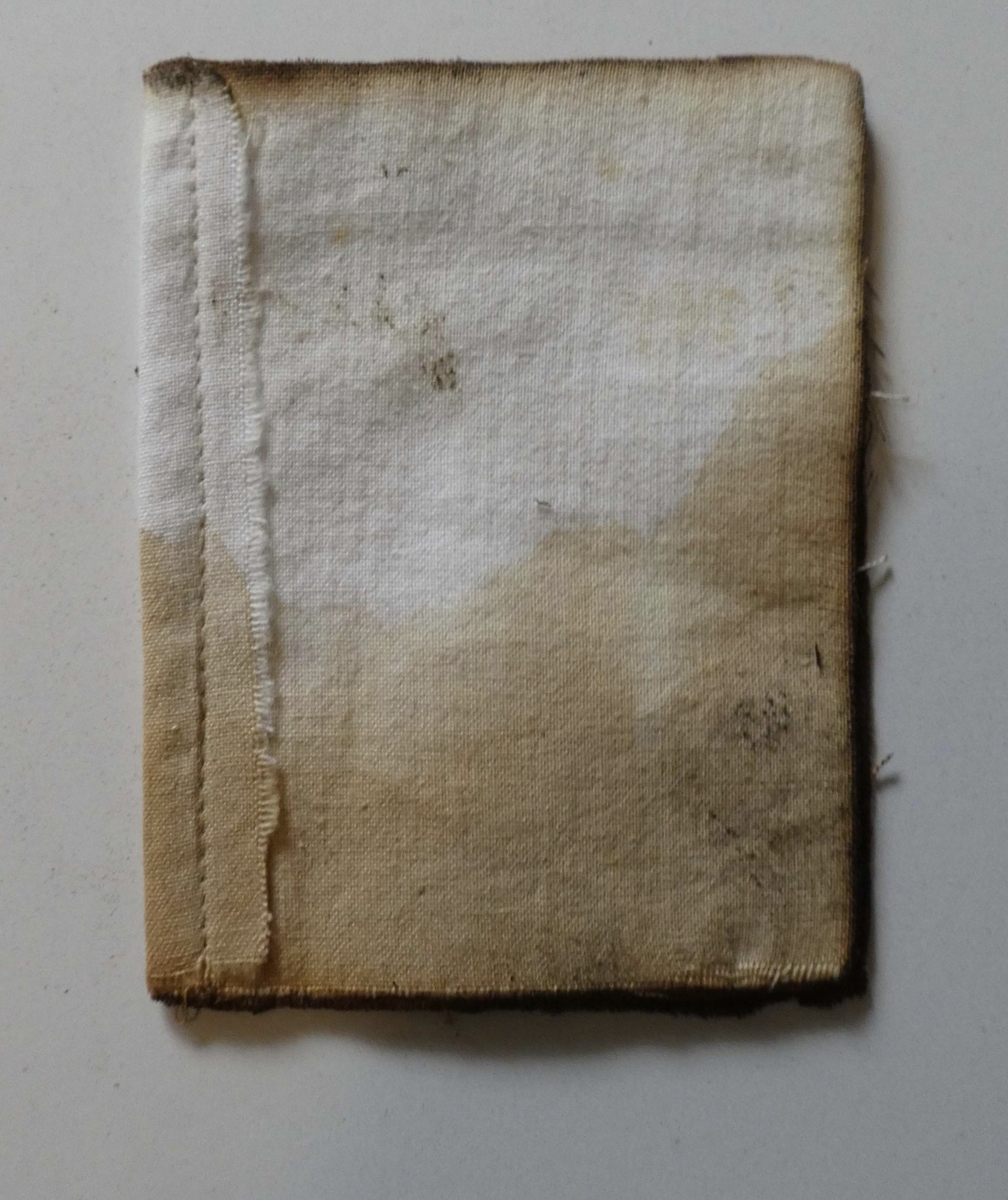




How big are your little figures? Maybe they might like to be enclosed in some of this fabric??
Or the images of the little figures embedded into the fabric somehow?
These are quite tiny - like around 3 inches.
Linda
Hi Linda,
I love these wordless cloth books, so evocative! The lack of words are like the words not being able to be spoken, the words of love left unsaid...Marjorie couldn't tell the children what was going to heppen to them. She was so in fear and traumatised herself.
I think I might be able to get the figures in them, with bits sticking out and I think that's alright to have things sticking out. Fragments of left over games, writings, objects left behind by the child become so precious to the mothers left to pick up their lives in grief, guilt and shame. Mother despair.
I'll make some new figures again, from the hemp paper clay.
Take care, Jules
Hi Jules -
That is hemp paper clay? Did you mix it yourself?
I am heading to Charlottetown, Prince Edward Island tomorrow just for the weekend. There is a conference for artist-run galleries. I am going on behalf of Void Gallery. I don't know if you made it there or not. It is the space that had my little deer on the walls. Anyway, Void has just been granted artist-run status, as it closed its gallery space. So we are looking for innovative ways to continue into the future.
I am thinking of taking some of my little books with me, to add residue to them. Charlottetown is on the water, but I'm not sure how direct the access is.
Water stains say lots and little.
So you probably won't hear from me until Monday, hopefully with some new images to show you.
Linda
Hi Jules
Just letting you know that I am back from PEI.
While I was there, I met a woman who is doing a project about Canada's butterbox babies. This is related to what we have been talking about. The artist's name is Eva Romita, and she has been looking for a way to acknowledge babies that had been taken away from mothers in a home for unwed mothers.
Here is the text from Wikipedia about this:
"The Ideal Maternity Home, a discreet residence for unwed pregnant mothers, was operated by William Peach Young, an unordained Seventh-day Adventist minister and chiropractor, and his wife Lila Gladys Young, a midwife. They opened "The Life and Health Sanitarium", later called the Ideal Maternity Home in East Chester, Nova Scotia in February 1928.
From 1928 to 1945 the unlicensed Ideal Maternity Home promised both maternity care for local married couples and provided private birthing and placement of children of unwed mothers. However, it faced serious allegations of profiteering from the fees charged to female residents and adoptive parents, and for the home's high rates of infant mortality which were later proven to be caused by starvation. Any baby deemed "unadoptable" due to physical or mental handicaps was allegedly starved to death on a diet of only molasses and water. Within two weeks the child would succumb and was either buried behind the IMH property, in a field adjacent to a nearby cemetery, dumped into the ocean or burned in the home's furnace.The nefarious methods allegedly used by the Youngs also included separating or "creating" twins to meet the desires of their customers. And, they were said to have sold newborns belonging to local married women who were told that their child had inexplicably died. Since many births and deaths went unrecorded, the full extent of the atrocities committed at the Ideal Maternity Home will never be known.
During WWII, business at the IMH was booming because nearby Halifax was a major port that was the departure point for convoys crossing the North Atlantic Ocean to England. The sailors & merchant seamen left behind many unmarried or widowed expectant mothers. The IMH provided the only place that could provide for these women and their offspring. The birth mothers would be charged $500 and they would work at the Home for many months in order to pay their maternity bills. Although the Nova Scotian government officially closed down the IMH in November 1945, the Youngs continued to operate and sell babies under the illusion of a hotel for a while longer. However, the heyday of the war years had ended.
The Ideal Maternity Home was the source for an illegal trade in infants between Canada and the United States. During this period, the laws in the U.S. forbid adoption across religious backgrounds. There was an acute shortage of babies available for Jewish couples to adopt. The home provided these desperate people "black market" adoptions charging up to $10,000 for a baby (in 1945 prices). A few babies were never legally adopted and yet they were brought across the border to the U.S. Hundreds of babies ended up in Jewish homes in the United States, mainly in New York and New Jersey.
This dark chapter in Canadian history has been documented in several books, plays and a movie. The title of Bette Cahill's book, Butterbox Babies, and the subsequent movie is a reference to the "butter boxes," wooden grocery crates from a local dairy used as coffins for the babies murdered at the Ideal Maternity Home.[1]
A group of the Survivors of the Ideal Maternity Home, now scattered throughout the U.S., Canada and Europe continue to meet, provide support, and assist one another with birth family searches. See the link for their website: idealmaternityhomesurvivors.com at the bottom of this article."
Eva lives a few miles from the original Ideal Maternity Home. She is hanging 800 of the old-style cloth diapers on very long clothes lines for an event called To Air is Human to be held in Halifax October 14th of this year.
She asked herself may of the questions that we are dealing with - how do you represent absence?
How are you doing?
Linda
Dear Linda,
I made some more figures using the other clay. How awful about the Butter boxes. I have just received a book about that which I am going to read about new revelations about the Butterbox baby deaths by Bette Cahill, this happened during the time of the Child Immigration Programme. Warpping up the Child Immigration Programme, there was no help for the mothers, they were expected to survive the physical and mental pain, grief, and shame about their poverty and having their children removed. Researching further, often the children were plucked from nice but poor families rather than orphans or street children. The lies the children were told about their parents and in particular their mothers was a shocking thing, and no knowledge or addresses were swapped between mothers and their children as they did not know where they had been taken to, let alone the children were too young at times to remember the address of where they lived, even if they were allowed to write. In 'Marjorie, Too Afraid to Cry' she was not reunited with her siblings until the opportunity of the apology came round in 2010, when she an elderly lady and inspired by her daughter, Patricia Skidmore, to take the flight over to England to reconnect with her family. Marjorie was so angry her mother took the pain of Marjorie's anger when she visited her daughter, but Marjorie did not realise at that point that it wasn't her mother's fault, and she only found out later that her mother had contnued to miss her young children so much after they were sent away to Canada. All that unresolved grief and pain, so awful for everyone personally involved in their families. I make the figures to describe absence.
